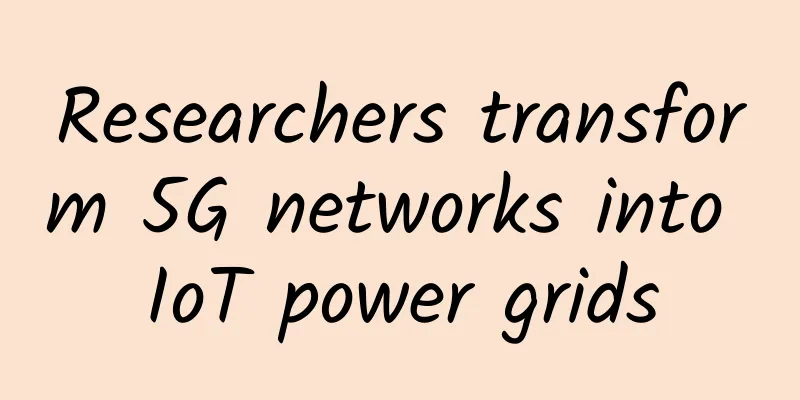The 5G era is accelerating. When will edge computing replace "core" computing?

|
In the 5G era, the number of connected devices will increase significantly, and a huge amount of data will be generated at the edge of the network. If all this data is handled by the core management platform, there will be problems in terms of agility, real-time, security and privacy. In the future, more than 40% of data, including various smart devices such as smartphones, personal wearable devices, and cars, will need to be analyzed, processed and stored at the edge. In order to meet the surging demand at the edge of the network, the network trend is moving towards virtualization based on SDN/NFV, flattening expansion and enhancement, and sinking the core network user plane functions to the base station. In this context, edge computing (MEC, Multi-access Edge Computing) is regarded as a key technology and architectural concept for the transition to 5G, with the ability to combine IT service environment with cloud computing at the edge of the network to build a more intelligent mobile network. It is also an innovative technology that can connect the commercial potential of 5G and downstream industry opportunities.
Through edge computing, users can process massive amounts of data locally, a large number of devices can work together efficiently, and many problems can be easily solved. Various schools of thought are "racing for territory" and edge computing has become an important infrastructure for 5GEdge computing is a distributed computing architecture that originated in 2013 at the beginning of the 4G era, on a computing platform jointly launched by IBM and Nokia Siemens. The original architectural idea was to migrate the core network elements of the entire cloud computing platform to the edge close to the terminal. It generally refers to the sinking of IT and cloud platform computing power closer to the terminal, integrating the innovative capabilities of network transmission, computing, storage and application, and decentralizing the processing of data, the operation of applications and even the realization of some functional services from the network center to the nodes at the edge of the network. After that, major telecommunications standard organizations began to promote the standardization of mobile edge computing. The Edge Computing Alliance (ECC) defines four domains for edge computing: device domain (perception and control layer), network domain (connection and network layer), data domain (storage and service layer), and application domain (business and intelligence layer). These four "layer domains" are the computing objects of edge computing. Its applications are initiated at the edge side, resulting in faster network service responses and meeting the industry's basic needs in real-time business, application intelligence, security and privacy protection, etc. 5G has supported edge computing since its architectural design, and has carried out detailed design of the network session management mechanism. CCSA approved the establishment of the edge computing industry standard and research report as early as September 2017, and the edge computing industry specification has entered the standard stage. It should be said that edge computing is not only an industry, but also the infrastructure and basic capabilities of the 5G era. The industry characteristics and development stage of edge computing determine that it is experiencing a period of prosperity with a hundred schools of thought contending and a hundred flowers blooming. If you comb through it carefully, you will find that in the new field of edge computing, there are at least seven or eight schools of thought, including cloud computing, CDN, hardware equipment, operators, research institutions, industry alliances, and other small and medium-sized manufacturers. Different origins not only bring different plans and layouts, but also mean different evolution paths. China Mobile launched the "Pioneer 300" pioneer action for edge computing, and released the IaaS platform BC-Edge, the edge Sigma platform, and the Otii edge customized server; while Inspur launched the first Otii edge computing server. Among cloud computing vendors, Alibaba Cloud has strategically invested in the field of edge computing technology and has also accelerated its pace after launching the IoT edge computing product Link Edge. Subsequently, it not only joined forces with Intel to launch an open framework specifically for IoT applications; it also released the IoT edge gateway technology; and at the same time, it open-sourced the real-time computing platform Blink. On the eve of commercial explosion, there are still three major problems to be solvedAlthough MEC has become mainstream, there are still three major problems and challenges for MEC and various MEC-based solutions before they can be widely used. The first is the mobility problem. The mobility problems involved in the MEC system can be divided into two situations. One is the movement of mobile terminals within the coverage of a specific MEC server, which does not involve the switching of MEC servers. The other situation is that the mobile terminal moves from one source MEC server to another destination MEC server. At present, ETSI and major manufacturers are also paying attention to the issue of MEC mobility. I believe that with the continuous deepening of research, this problem will be gradually solved. The second is the billing problem. Under the current network architecture, the billing function is the responsibility of the core network. The mobile edge computing platform "sinks" the network service function to the edge of the network, where computing can be unloaded, which makes the billing function difficult to implement. At present, ETSI's standardization work has not yet involved the implementation of the billing function. Therefore, there is no unified billing standard, and different companies provide different billing standards. The third is the security issue. In the mobile edge computing scenario, mobile terminals will face a more complex environment, so many security solutions originally used for cloud computing may no longer be applicable to mobile edge computing. Authentication of network entities such as gateways at different levels is also a security issue that needs to be considered. Therefore, the MEC system must solve security issues such as authentication and authorization. At the same time, the communication process based on MEC involves a lot of content sharing and computing collaboration. Therefore, user privacy protection has become a challenge that needs to be solved in the future development of MEC. Conclusion: Despite the above problems, it is believed that as we continue to move towards 5G, MEC will still play a significant role in more new scenarios. At the same time, the release of MEC industry standards and the widespread deployment of MEC platforms will also bring new operating models to major mobile operators, equipment providers, OTT and third-party companies. In the future, MEC will surely become an important part of 5G, pushing network services and communication services into a new stage. |
>>: How to implement online documents for multi-person collaboration
Recommend
A brief discussion on IPv6 intrusion and defense
Preface Recently, some customers started the tran...
Twisted Pair vs. Fiber Optic Cable Advantages and Challenges
Data transmission is the backbone of today's ...
6G network, what application scenarios will it have in the future?
Looking back at the entire development history of...
IP address planning in corporate intranet, you should master these 6 points!
Intranet is the implementation of Internet techno...
UFOVPS limited 30% off, Japan/Hong Kong CN2 GIA/US high-defense VPS monthly payment starts from 26 yuan, top up 200 yuan and get 20 yuan
UFOVPS has launched a promotional event during th...
What exactly is SD-WAN, which is so popular on the Internet?
As a popular concept, SD-WAN has frequently appea...
China Mobile completes R16 version 2.6G+700M SUL uplink enhancement test
Recently, China Mobile and MediaTek completed the...
How to improve the operational capabilities of data centers?
Data center operation is an important part of an ...
The speed can reach 10,000 times that of 5G, and the official interpretation of 6G is here
In the era of mobile Internet, whoever has more a...
Lenovo Debuts at Microsoft IoT Conference, Driving Business Intelligence Innovation with Smart IoT Devices
On December 3, the highly anticipated 2019 Micros...
[Christmas] ColoCrossing 35% off: $2.57/month-1GB/25G SSD/20TB@1Gbps/Los Angeles & New York Data Center
I just shared the news of ColoCrossing's 25% ...
5G is coming, opening up unlimited business opportunities
Now no one asks "how far are we from 5G"...
HostingViet: Vietnam VPS annual payment 40% off, 2GB/20G SSD/unlimited traffic/annual payment starting from 190 yuan
HostingViet has launched a promotion for the firs...
KVMLA: Singapore/Tokyo CN2+Softbank VPS 20% off, dedicated server 15% off, top up 500 and get 100
KVMLA is a Chinese hosting company founded in 201...
How should the system's facade API gateway be designed?
As the popularity of his e-commerce website grew,...









